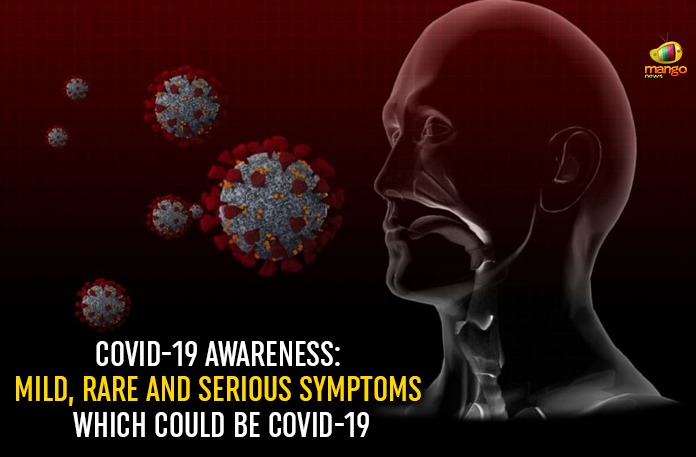Months after the deadly Novel Coronavirus broke out in India, the symptoms are still a matter of thinking.
While for many patients, COVID-19 symptoms are mild and rare, many develop serious illnesses including pneumonia and other diseases.
In many patients, symptoms could be one or more than one. Some of it includes headache, congestion, runny nose, wet cough, tightness in chest, nausea and vomiting, chills and diarrhea.
While the infection is easy to be contacted through the nose, eyes and mouth. Nose is one of the major parts, which could infect the body, developing other respiratory illness.
Other rare to serious symptoms which could be COVID-19 are headache, severe body pain leading to unconsciousness, weakness and other cardiac issues.
Some of strange ways and symptoms of the Novel Coronavirus or COVID-19 could be rashes over body, itches, severe pain in thighs, joints and legs.
The virus also appears to attach to the insides of blood vessels, and in rare cases causes life-threatening blood clots that travel to the lungs, heart or brain. In very rare cases, clots can cut off blood flow in the limbs, requiring amputation. Patients sick enough to visit the hospital may be given blood thinning medications to prevent or treat blood clots.
In adults, symptoms or the mild symptoms might not need urgent medical attention, but for children, even in mild symptoms one should take medical help.
Some of the symptoms include: prolonged fever, pain, weakness, pale patchy or blue skin, trouble in breathing, chest pain, abdominal pain and vomiting.
If you have any of the symptoms mentioned above for a long time, get medical attention.
Besides medical help, isolate until you can be tested. Most patients will recover on their own within a few weeks.
It’s a good idea to monitor oxygen levels at home with a pulse oximeter. Pay close attention to symptoms during days five to 10 of the illness, when oxygen levels may drop to dangerously low levels.
Seek medical care at any time if you experience trouble breathing, any concerning symptom or take a turn for the worse.



































